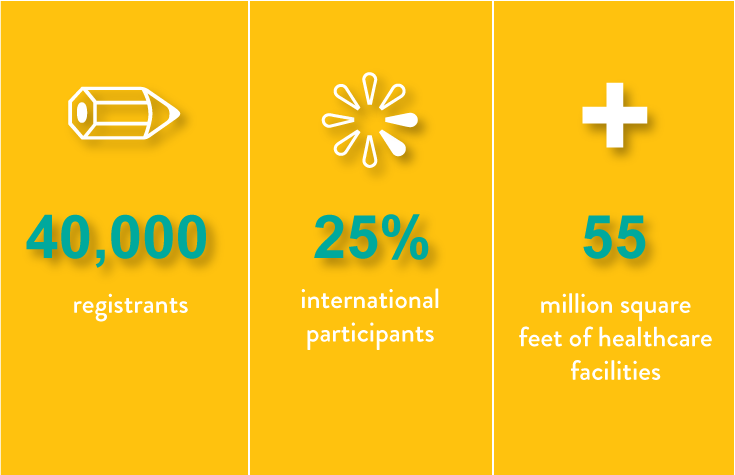Healthy Building Standards Improve Medical Outcomes
“The Green Guide for Health CareTM created a bridge between the relationship between human health and the built environment. At the outset, we recognized that the health care sector was perfectly positioned to make this relationship clear” —Gail Vittori, Center for Maximum Potential Building Systems
It’s hard to get healthy in sick buildings. To Gail Vittori, executive director of the Austin-based Center for Maximum Potential Building Systems, it seemed obvious that health care facilities should live up to the “first, do no harm” doctrine that applied to the doctors working inside.
When Vittori and her colleagues at the Center began their effort to develop the original Green Guide for Health CareTM, some cancer treatment centers were built using materials linked to causes of cancer. Some pediatric clinics contained chemicals that triggered asthma. Health care facilities were built without concern for patient access to the natural healing of fresh air and sunlight.
Today, thanks to their efforts, The Green Guide for Health CareTM has become the premier green building guide for the health care industry, and a transformational tool for building hospitals that are healthy for people and for the environment.
It’s hard to get healthy in sick buildings. To Gail Vittori, executive director of the Austin-based Center for Maximum Potential Building Systems, it seemed obvious that health care facilities should live up to the “first, do no harm” doctrine that applied to the doctors working inside.

GAIL VITTORI – CENTER FOR MAXIMUM POTENTIAL BUILDING SYSTEMS
In collaboration with:
Health Care Without Harm
Healthy Building Network
Finding the Critical Path Through Collaboration
The team knew that there already were detailed green standards for the equipment inside health care facilities. They realized that the health care sector was perfectly positioned to become a leader in defining the relationship between human health and the built environment. Vittori says, “We wanted to create a bridge between the building and its contents, uniting the issues that apply to medical devices with those that apply to the building.”
“We wanted to create a bridge between the building and its contents, uniting the issues that apply to medical devices with those that apply to the building.”
Vittori and the team could have focused on bringing about change in the Center’s hometown of Austin, Texas, but instead they chose to create a tool that would change the entire healthcare system. This key move would create a useful tool for designers of healthcare facilities around the world.
They began making strategic decisions that created leverage where they needed it. First, they partnered with the Healthy Building Network and Health Care Without Harm. This gave them bandwidth and traction in a very complicated operating environment. The collaborators reasoned that if they could apply to entire built structures the same approach that Health Care Without Harm used in ridding hospitals of mercury in medical devices, they could have an exponential impact on the places where people go to heal.
With her partners, Vittori nominated a 15-person steering committee that would contribute specialist expertise in all the disciplines she wanted to pull together in a set of guidelines for healthy buildings. This committee included architects, manufacturers, builders, facility operators, even public affairs activists, because Vittori’s holistic approach needed contacts who could contribute to the whole process of creating health care facilities, from the concept, through construction, to “what happens when you open the doors?”
Stepping Stones
1
We selected initial partners to provide the bandwidth and reach required to achieve results.
2
We create a steering committee that holistically covered industry expertise from one end to the other.
3
We leveraged the authority of top industry influencers through interconnected collaboration.
Creating the Capacity for Independent Action
The partners decided to keep their program independent so that they could retain control of their radius of action. They identified the well-established U.S. Green Building Council, with its successful Leadership in Energy and Environmental Design (LEED) certification system, as an important player in the future of the effort. First, they put a representative from the Council, ex officio, on their thought leadership team. Then Vittori herself became a member of the board of the Green Building Council: still independent, but interlocking.
Looking at the internal process by which substantive elements could be inserted into the evolving LEED system, Vittori says she saw the benefit of weaving her message about the relationship of human health to the built environment into the Council programs, but she realized there was “no space in the process” for evolving her initiative. She decided it would be better to create something new that could “wedge in” as a fully-realized addition. That addition is the Green Guide for Health CareTM, now included in LEED v4.
Vittori says she is encouraged by the global impact of the Guide. It turned out the need was greater than anticipated, as registrants flocked to sign up not only in the U.S., but from around the world. More than 25 per cent of the registrants on the Green Guide website are international. There are 40,000 registrants, and her guidelines have been used in at least 55 million square feet of health care facilities.
The impact of The Green Guide for Health Care™ continues to be measured in longer lives, shorter hospital stays, and higher survival rates, as well as in a new economics of facilities design, construction, and operation. “We brought people together to create something that never existed before,” Vittori says. “The Green Guide is proof that cooperation can multiply the impact of individual efforts.”
The RESULTS!

